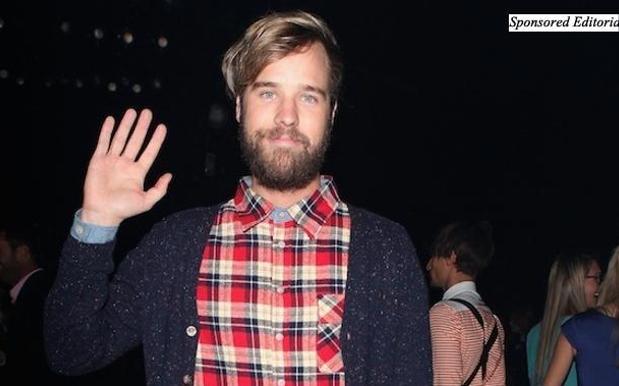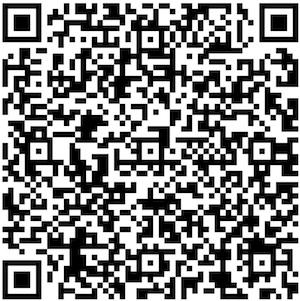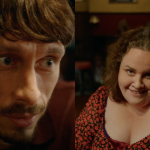
Where did idea come from?
[I first had the idea] at Oxford Art Factory where I was watching a band with some friends, and we really liked the band, and after they finished playing they told us “guys, you can go get our EP from the back of the room, they’re only five bucks, and if you don’t have five bucks just take a CD.” And we thought that it was pretty sad that this band was essentially paying people to hear their music. I thought that was really horrible and that there should be a way for musicians to be able to get music out in a way that wouldn’t cost them anything. We couldn’t even remember the name of the band the next day which is the sad thing about it! So [a friend and I] thought about an App which, essentially, drunk people could use; so if they see some live music they could get it in their phone – get an EP in their phone – so when they woke up the next day they can’t physically forget about it. That was the initial idea, but it grew into a completely different monster after that which was the scavenger hunt idea.
How did it evolve from the initial idea into what it is now?
We wondered how bands could get their music circulated and out to potential fans in a new way without having to spend money – because bands don’t have money. That’s when we had the idea to make it a kind of musical scavenger hunt so that a band can essentially leave songs in exciting places, but more importantly, in places that they want people to listen to their music. So, for example, if you’re in a surf rock band you can leave your song – in code form – by the ocean on a park bench, so someone can find your song and listen to your song by the beach. That was the premise for it: giving musicians the ability and power to give listeners the best possible context in which to experience their music.
How receptive have people been to the idea? QR codes are very prevalent in places in Asia but has there been any resistance or challenges in getting bands and listeners to use QR codes?
Yeah. I guess it all relies on bands taking control so for them it’s about being comfortable in using a QR code. In Australia QR codes are something that people don’t really use – they’re still learning how to use it – so one of the challenges is explaining to people how they can turn a song or a piece of audio and how that is converted into a physical code they can put places.

I am music. Zap me
What did the testing phase of the App involve?
We came up with a framework for the App which was built by programmers and when we started testing it we would use our own songs and zapped pieces of paper with [QR] code and that was great! But then we came across such a… no-brainer of a problem, and that was: a lot of these people had been putting the locations of their songs up in nightclubs or dark bars – which makes total sense, but it completely slipped us by. We were doing all the testing in the day and hadn’t thought to use any lights or flash when viewing the QR codes. When we were getting ready to roll out, a friend’s band told us “we just put the code up in a venue, but when we tested it was too dark.” So we altered the code and make sure that the [smart phone] light would come on. It was such a simple problem, but would have made the App unusable if we hadn’t fixed it.
It’s a great example of one of the considerations you have to make in the trouble-shooting phase. What were the other considerations you had when making the app from a business point of view?
For the business considerations, we really made sure we were doing it for the right reasons. For us, it was about trying to make it easier for bands to promote themselves. We wanted to make a machine that would take care of itself. We didn’t want to charge the bands for using the service and we didn’t want to charge the user for using the service because then they probably wouldn’t use it. We made everything free but unfortunately that’s not a great revenue-generating format.
The way we were getting people to pay for the actual bandwidth – it costs us to host the music – was to set up a sticker website where bands can get their songs converted into a sticker so they can put the stickers up places. That’s the phase two. At the moment it’s a non-profit iPhone app that we’re just trying to get out to indie bands.
Imagine zapping this bad boy next time you and your latest squeeze are down by the ocean. Someone be gettin’ it on.
It’s obviously an enabler for bands to get their music out there in new and creative ways. What’s your favourite example of a band harnessing Zapatunes?
I like the idea of leaving it in toilets. I just think that’s really funny. You’ve got some time to kill depending on your current situation so… Someone sent me a few messages over twitter saying they found this awesome song in a toilet. It was just a public toilet and on the back door, this girl found a band called Sons and she sent me the code so I could download it myself and the band is this Melbourne band that sound like Foals. They are awesome. It was just really exciting having a band whose music I hadn’t heard before but discovered by my app. It’s really cool because it’s such a cool song. I like that she discovered a song in a weird place.
What were the biggest challenges you faced when making and developing the app.
It’s all about communication. You can write instructions down and plan everything from how you want it to look to how you want it to react but there’s always a lot of work to change the smallest of things. When people use the app and download the code, there is an electricity sound, like a lighting strike. Something that simple takes so much code. You really have talk that stuff through with your programmers.
I guess the biggest challenge an app like ours faces is getting the word out to bands and getting bands to start using it. It’s one of those things where you wont get users if you’ve got no bands and you wont get bands if there aren’t any users. You have to essentially simultaneously build two audiences/user bases.
In a perfect world, no lowrider would be complete without this banger zapatuned to its bumper.
What advice do you have for someone who’s considering building their own app.? What do you wish someone told you?
It’s going to cost more than you think and if you think your app is going to take 15 days to create, it will most likely take 30 to 35. Expect everything to take a long time and expect the littlest things to take the longest.
I wish someone turned to me and said “Danny, it’s going to be more expensive than you think and It’s going to take longer than you think.” My biggest piece of advice is keep it simple. The simpler the app and the easier it is to understand, the more willing people will be to jump on it. All the best apps are the ones that you can explain in one sentence.
Where do you see Zapatunes in three years time ideally?
I’d love to see Zapatunes as a vehicle for both established bands and indie bands who want to take care of their own promo and not have to rely on big record labels. I’d love to be able to walk down the street and find songs. I want to sit on a bus and find someone’s song. I want to see magazines and people working in the press, handing out songs for people because it’s not just about the bands, it’s about people listening to a whole diverse range of music rather then just listen to music that the hear on the radio and see on TV.
Picture by Caroline McCredie/Getty Images



